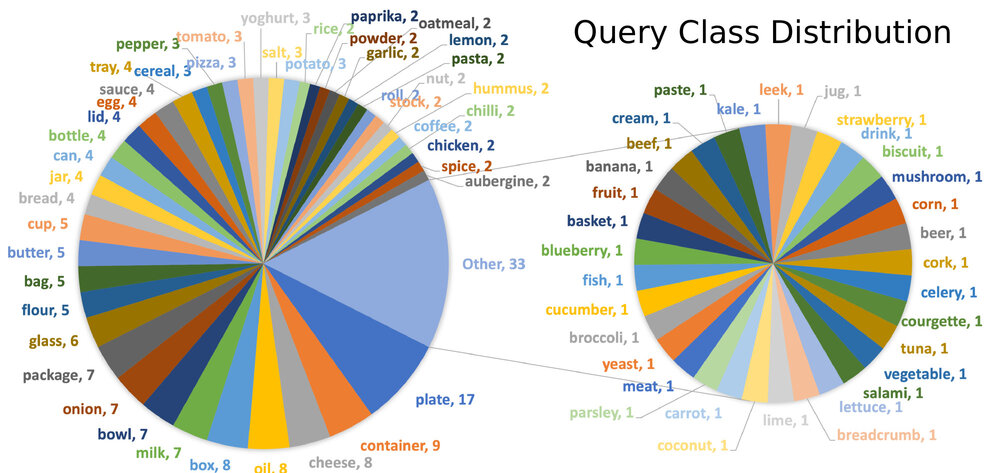When use this repo, any of our models or dataset, you need to cite the VISOR paper
@inproceedings{VISOR2022,
title = {EPIC-KITCHENS VISOR Benchmark: VIdeo Segmentations and Object Relations},
author = {Darkhalil, Ahmad and Shan, Dandan and Zhu, Bin and Ma, Jian and Kar, Amlan and Higgins, Richard and Fidler, Sanja and Fouhey, David and Damen, Dima},
booktitle = {Proceedings of the Neural Information Processing Systems (NeurIPS) Track on Datasets and Benchmarks},
year = {2022}
}
Where Did This Come From (WDTCF)? is a taster benchmark for long-term perception with scene segmentation. Given a frame from an untrimmed video with a mask indicating a query object, the task aims to trace the mask back through time to identify WDTCF, e.g., milk from the fridge, and a plate from a particular cupboard.
For example, where did this (onion) come from?
Answer: Cupboard
In total, 222 WDTCF examples are obtained from 92 untrimmed videos in train and val sets of VISOR, with 78 unique query objects. The gap between the query and evidence frames is 5.4 mins (19K frames) on average, but it varies widely with a standard deviation of 8 mins (min=1s, max=52 mins).
The annotations include the following:
Query frame ID: frame to ask the question 'where did this come from?'.Query object: object of interest in the query frame and 'this' in the question. Note that we assume object name is unknown and only mask of the object is provided as input.Source object: a finite list of 15 sources from which objects emerge in the kitchen, i.e., [fridge, freezer, cupboard, drawer, oven, dishwasher, bag, bottle, box, package, jar, can, pan, tub, cup].Evidence frame ID: evidence to infer the answer for the question, i.e, the query object emerging from the source object.
Download all annotation visulization
python evaluation.pyDownload the VISOR annotations here.
Prepare your prediction, the folder structure should look like
Prediction
| WDTCF_preds.json
| P01_01_celery_query_pred.png
| P01_01_celery_source_pred.png
| ...
| P37_101_chicken_query_pred.png
| P37_101_chicken_source_pred.png
In addition to the folder structure above, predictions should be formatted as a single JSON. The keys in WDTCF_preds.json are the same with WDTCF_GT, e.g., P37_101_chicken, and the prediction for each query includes:
query_pred: prediction of the query object class ID, e.g., 58.answer_pred: prediction of the source object class ID, e.g., 13.evidence_frame_pred: prediction of the evidence frame, e.g., P37_101_frame_0000000512.jpg.
PX_X_X_query_pred.png and PX_X_X_source_pred.png are the prediction of query and source masks respectively (resolution: 1080x1920).


